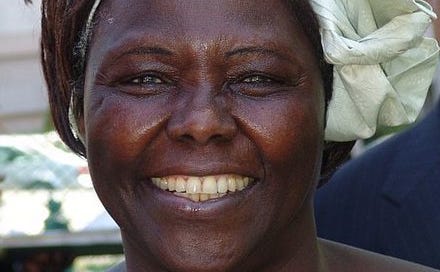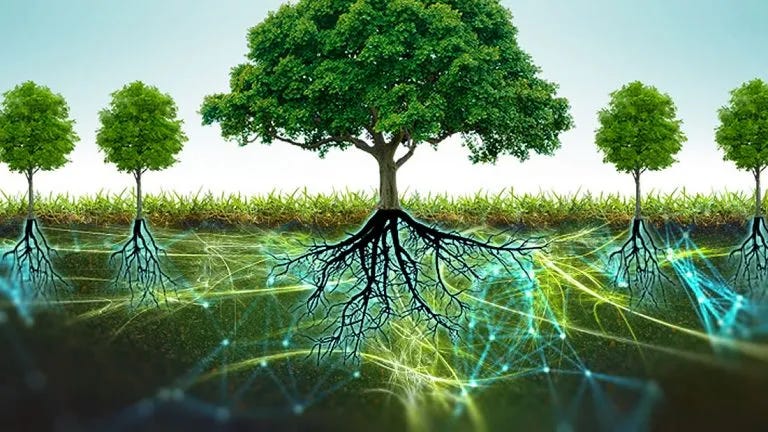Wangari Maathi’s legacy is one of fearless persistence and unwavering conviction. She is the first African woman and environmentalist to receive the Nobel Peace Prize for transformative impact on environmental conservation, democracy, and human rights.
Image of Wangari Maathi from Wikipedia
I first learned about Wangari Maathi through a children’s read aloud, called Wangari Maathi: The Woman Who Planted a Million Trees, written by Frank Prévot and illustrated by Aurélia Fronty.
The book tells the story of Mama Miti, “mother of trees,” and her incredible feats against the oppressive leadership of Kenyan President Daniel arap Moi. The main thread of the story is her fight for the love and dignity of all life by drawing attention to the ways in which the decimation of the natural environment impacts wildlife, human rights, and democracy, particularly those of women and children.
In her memoir, Unbowed, she describes a recurring dream she had as a young girl running next a stream that no longer existed in her rural Kenyan village. Instead of being drawn into despair, the dream seeded her aspirations that would grow to a nationwide movement for liberation, inspire similar efforts in other parts of the African continent, and gain international support and collaboration.
The book ends with:
Today there are more trees in Kenya than there were when Wangari began her work and democracy has been established. The Green Belt Movement still protects trees, such as those in the Congo Basin, the second largest tropical forest in the world.
Wangari Maathi and her supporters planted more than 30 million trees. And every day, even now, new ones are planted in Kenya. Wangari Maathi was awarded the Nobel Peace Prize on October 8, 2004 for the countless seeds of hope she planted and grew over the years.
On August 14, 2012, the 2011 Nobel Peace Prize Laureate, Leymah Gbowee, visited the Green Belt Movement in Nairobi. When asked what was the “big story” of her day, she responded, “This is the story of the day,” pointing to the tree she planted near the one Mama Miti planted.
This moment of recognition made by Leymah Gbowee to Wangari Maathi and the similar ways in which they were “the dream barrier and the dream carrier” expands my growing curiosity of dreamwork as a living bridge. Perhaps there is a “mother dream,” likened to the “mother tree,” the oldest tree which newer ones link up to through the underground fungal neural network that connects them together for sharing information and nutrients to sustain the health for the entire forest.
Image of Tree Network from Medium
I am almost certain there are dreams I’ve been visited by that are tethered to a mother dream. And the ways in which we live forward similar dreams, surely there is a mother dream feeding them through the unique expression of our individual constitutions, realizing a larger arc of depth and expansion, one that centered decolonization and co-liberation. This new inquiry excites me and also makes me nervous.
What are your reactions to this inquiry?





